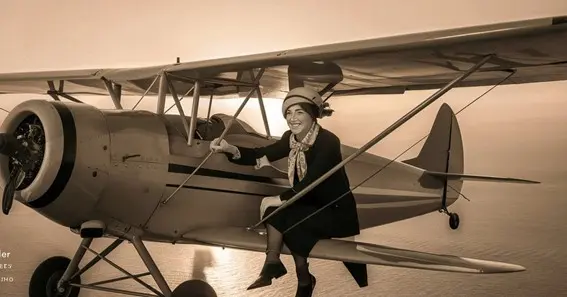Helen Keller, renowned for overcoming the challenges of being both blind and deaf, achieved numerous milestones that continue to inspire. Among her many accomplishments, one stands out for its audacity and symbolism: Helen Keller flying a plane. This event not only showcased her relentless determination but also challenged societal perceptions of disability.
The Historic Flight
In June 1946, during a tour of Europe to advocate for the American Foundation for the Overseas Blind, Helen Keller and her companion, Polly Thomson, embarked on a flight from Rome to Paris. As their Douglas C-54 Skymaster crossed the Mediterranean Sea, the pilot offered Keller the opportunity to take control of the aircraft. For approximately 20 minutes, Keller piloted the plane, an experience she later described as exhilarating.
Also Read N: Navigating runDisney Login: A Comprehensive Guide For Runners
How Did Helen Keller Fly a Plane?
Given her sensory limitations, Keller’s ability to fly a plane was facilitated through tactile communication:
- Tactile Sign Language: Polly Thomson relayed the pilot’s instructions to Keller by pressing symbols into her hand, a method they had perfected over years of collaboration.
- Sensitive Touch: Keller’s heightened sense of touch allowed her to feel the plane’s movements and respond accordingly, maintaining steady control during her time at the helm.
Also Read P: Gia Duddy Leaked: Navigating Privacy Challenges In The Digital Age
Significance of the Flight
This event was more than a personal achievement; it served as a powerful statement:
- Challenging Perceptions: Keller’s flight demonstrated that individuals with disabilities could engage in complex activities, thereby challenging societal stereotypes.
- Advocacy for Accessibility: The flight underscored the importance of creating opportunities and accommodations that enable people with disabilities to participate fully in various aspects of life.
Legacy and Inspiration
Helen Keller’s aerial endeavor continues to inspire:
- Educational Programs: Her story is often included in curricula to teach resilience and the potential of adaptive techniques.
- Advancements in Accessibility: Keller’s achievements have influenced the development of technologies and methods that enhance accessibility for individuals with sensory impairments.
FAQ
1. Did Helen Keller really fly a plane?
Yes, in 1946, Helen Keller piloted a plane for about 20 minutes over the Mediterranean Sea.
2. How was she able to control the aircraft?
Through tactile sign language, her companion relayed the pilot’s instructions, and Keller used her sense of touch to manage the controls.
3. What was the purpose of this flight?
The flight was part of Keller’s European tour to promote the American Foundation for the Overseas Blind and demonstrated the capabilities of individuals with disabilities.
4. How did the public react to her flying a plane?
The event received widespread media coverage and was celebrated as a groundbreaking achievement that challenged existing perceptions of disability.
5. Are there other instances of individuals with similar disabilities piloting aircraft?
Yes, for example, in 2012, 15-year-old Katie Inman, who is also deaf and blind, piloted a plane in Florida, demonstrating the ongoing impact of Keller’s legacy. Keller’s achievement in flying a plane remains a powerful symbol of perseverance and the belief that anything is possible with determination and courage.
Dive into an intriguing read rundisney-login










